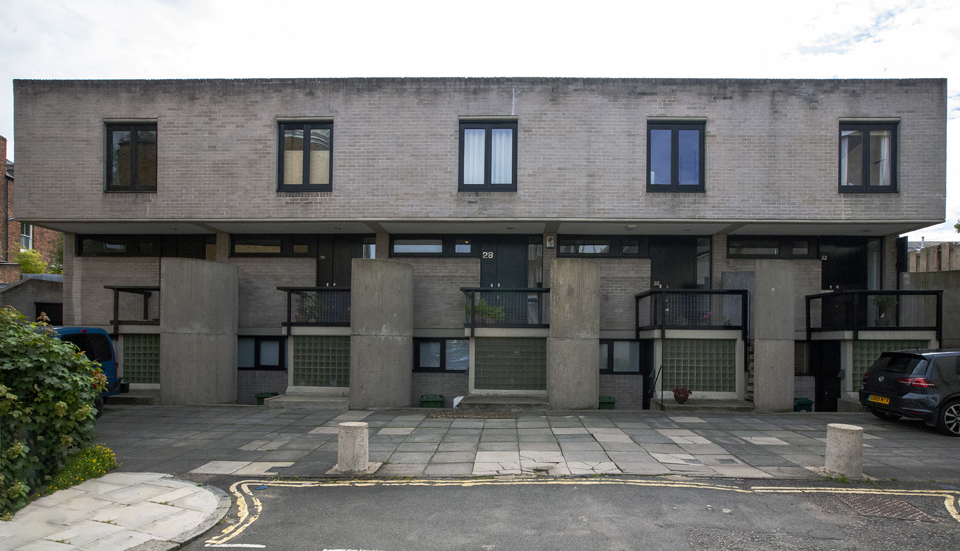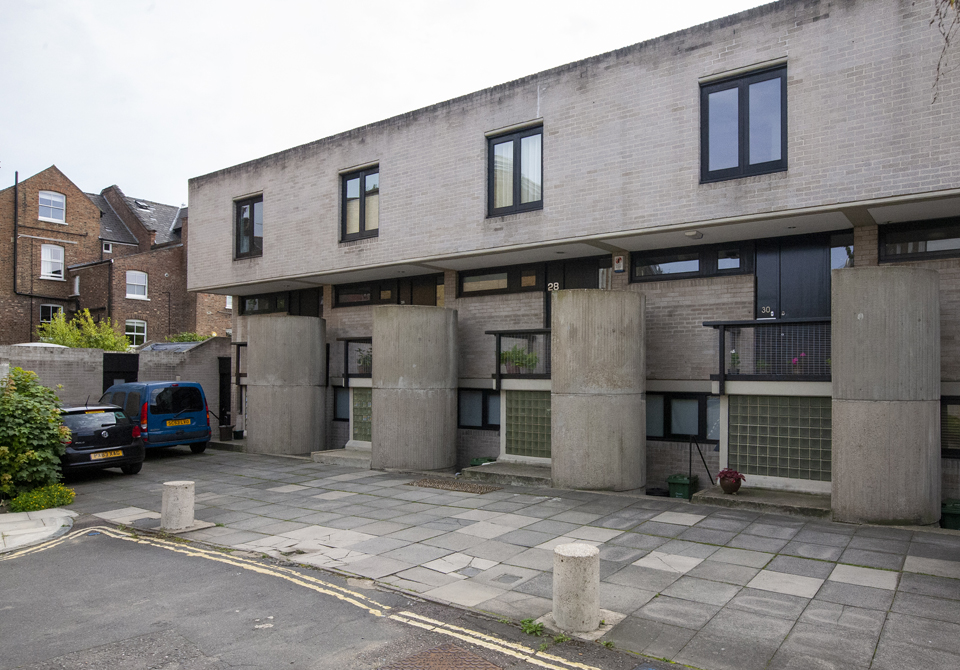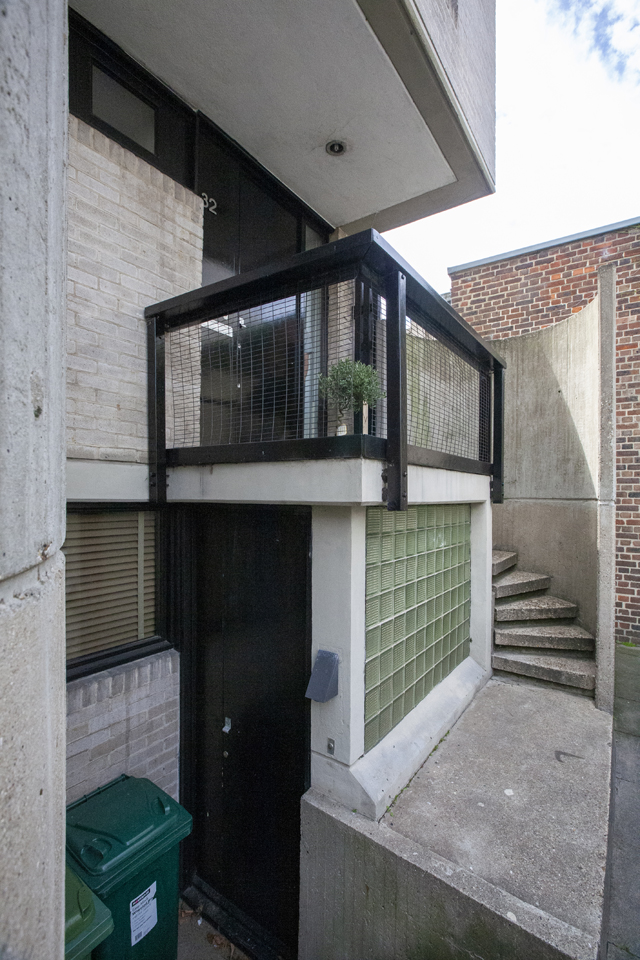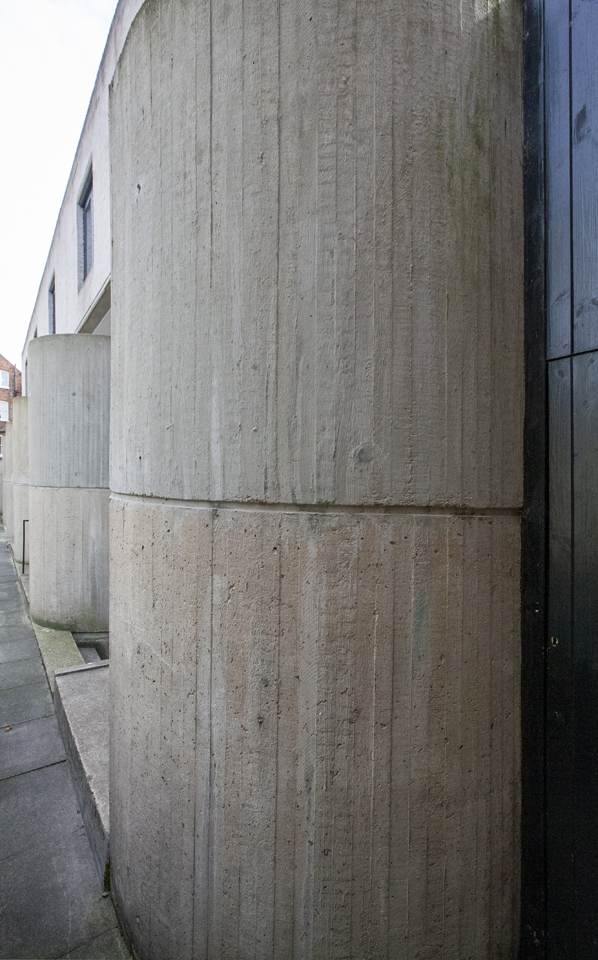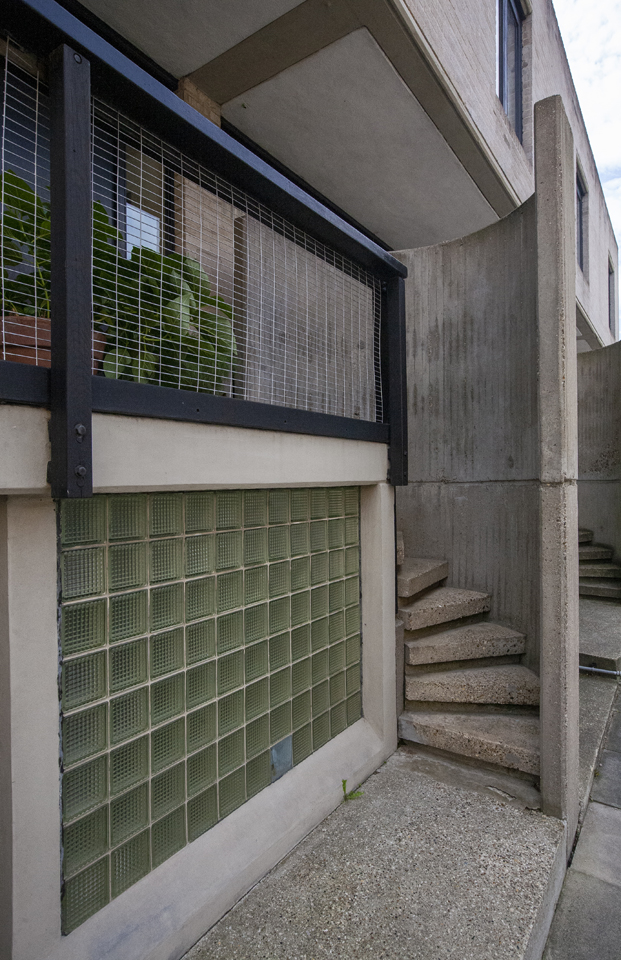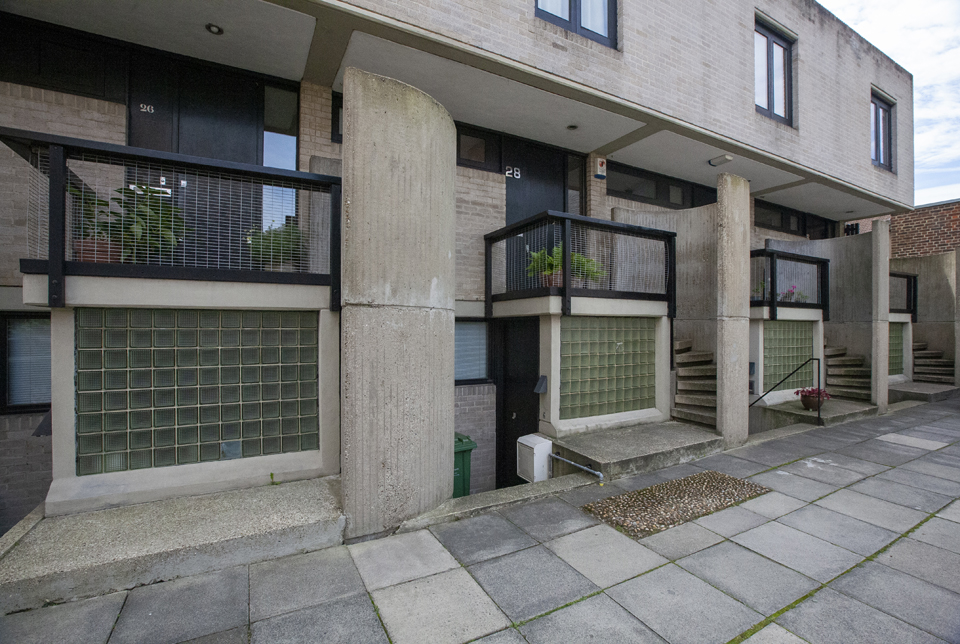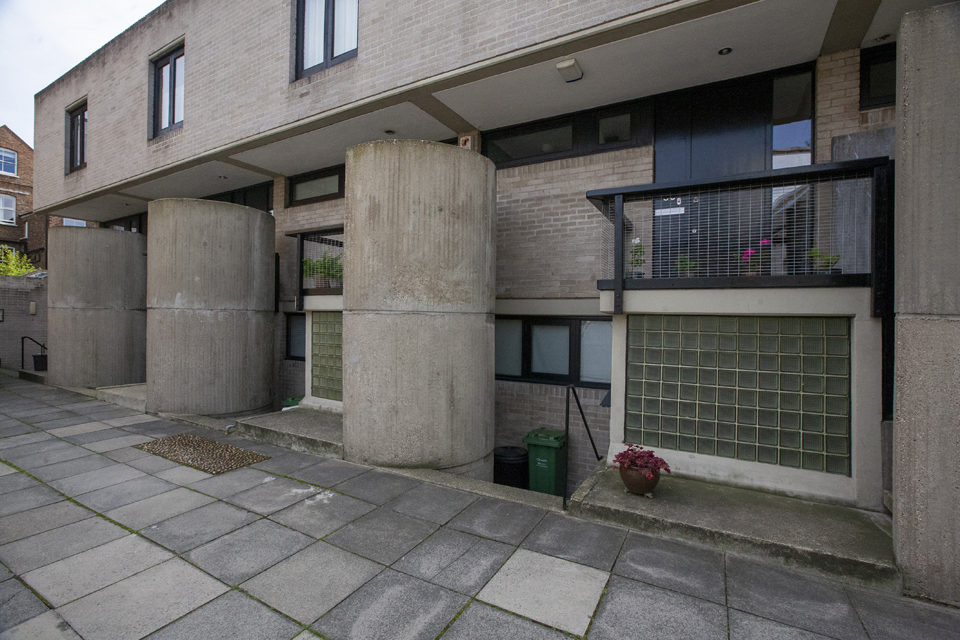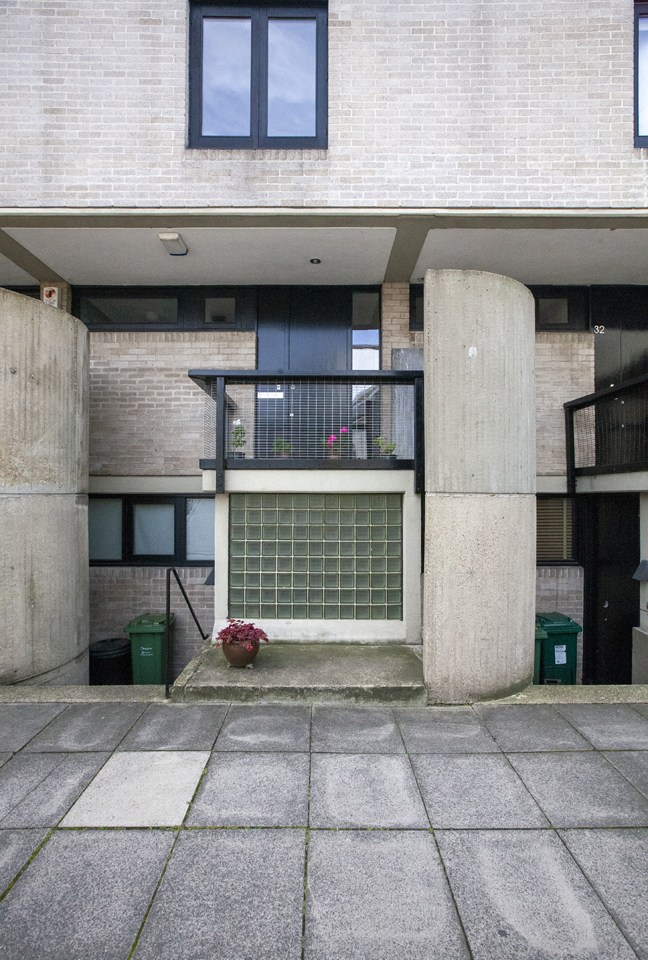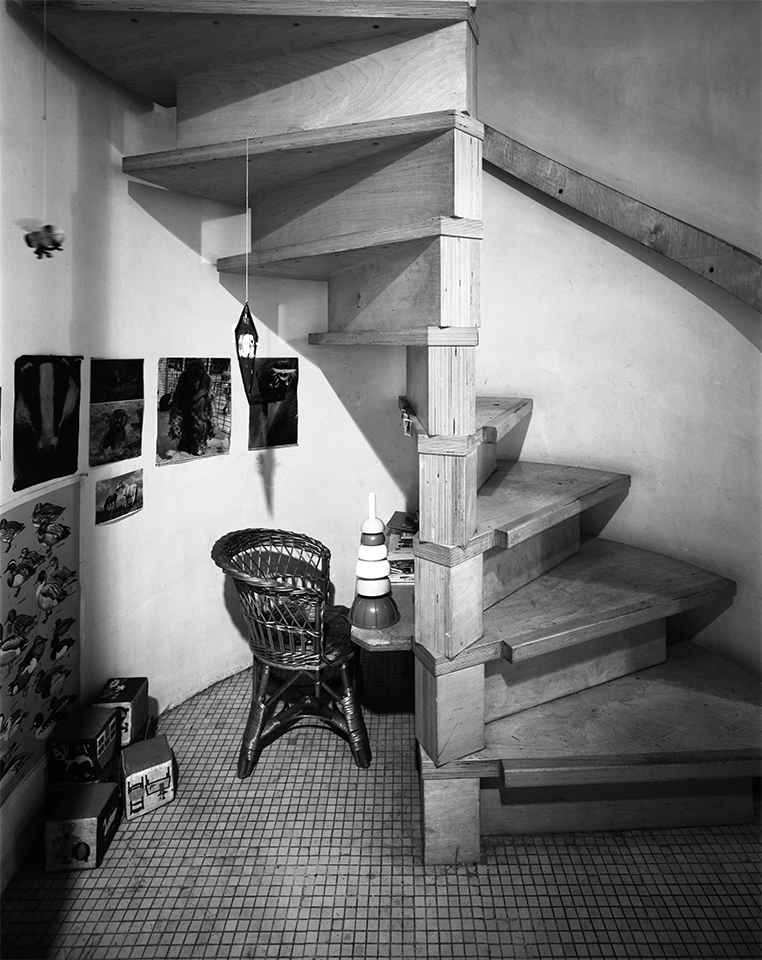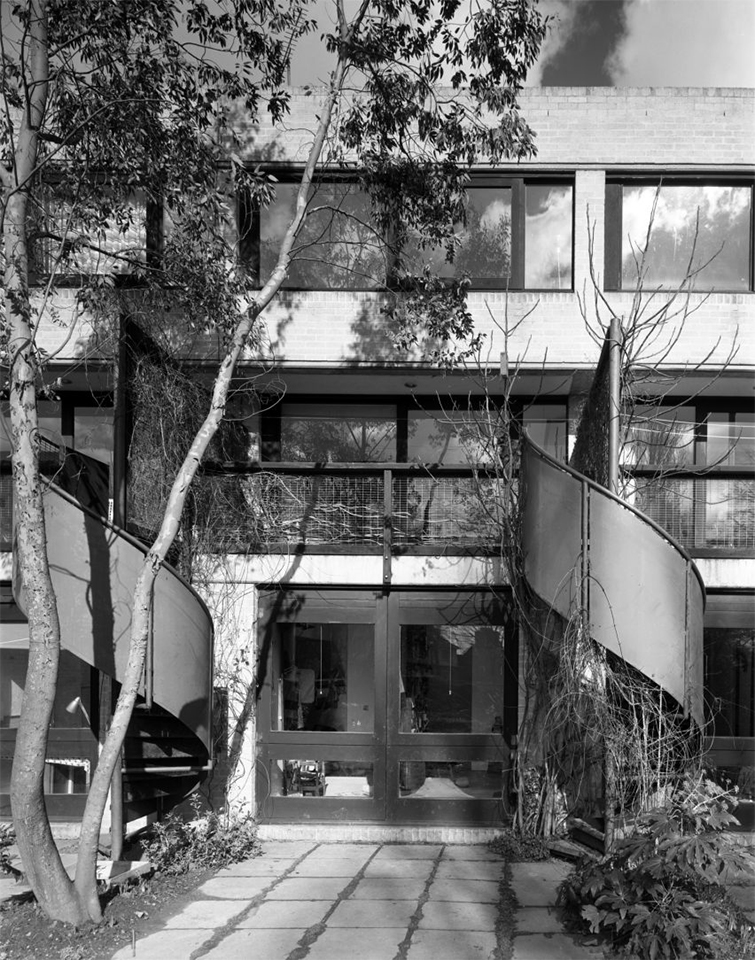Winscombe Street
1965
Winscombe Street was Neave Brown’s first exploration of the terrace, a type that he investigated throughout his career. Writing in 1967, he espoused the values of the nineteenth century street and the ‘traditional quality of background stuff, anonymous, cellular and repetitive’. Whilst Winscombe Street might be a series of repeated modules, it is hard to think of it as background. It may very well be considered contextual in its massing, but is striking in its variation from the terraced street that it closes into a cul-de-sac. The row of five houses was designed by Brown for his own family and four others in a group named the Pentad housing association. Amongst the original members was well know structural engineer Tony Hunt who acted in his professional capacity for the scheme. The houses were designed to Parker Morris standards and upended tradition by putting the kitchen on the middle of three floors. Elevating the middle floor slightly and lowering the bottom level as well gave both the kitchen and the children’s bedrooms below access to a shared rear garden. The top floor contained a further bedroom and a living room also with rear aspect. The small group of clients had asked Brown to design a bespoke house for each of them. After meeting with each family individually and concluding that they all more or less wanted the same thing Brown planned the terrace and its repeating units. Grade II listed in 2014, the listing report cites influences from Mart Stam's designs for the Weissenhofsiedlung exhibition at Stuttgart (1927), Corbusier's seminal Roq et Rob project (1948), Atelier 5's Siedlung Halen at Berne (1959-61) and Howell and Amis’s houses at South Hill Park, Hampstead (1956). Winscombe Street is concrete block crosswall construction with some in-situ elements, it is faced with flint-lime bricks. The composition of the street facing façade is visually complex, but not without order – the odd number of units gives a neat symmetry to the upper section which forms a soffit to the sheltered entrances. A tight semi-circular boardmarked concrete enclosure cups a short spiral stair to the elevated landing of the front door. An equally short straight flight of steps leads to the lower ground floor. This accomplished handling of the threshold space is reminiscent of many older London terraces but its formal composition is distinctively modern. As Winscombe Street was completed in 1965, Neave Brown took a post with Camden Borough Architect’s Department under Sydney Cook. The knowledge gained and ideas tested at Winscombe Street would go on to influence some of London’s most innovative mass housing schemes including Brown’s Fleet Road and Alexandra Road and works by his colleagues Peter Tábori, Gordon Benson and Alan Forsyth.
